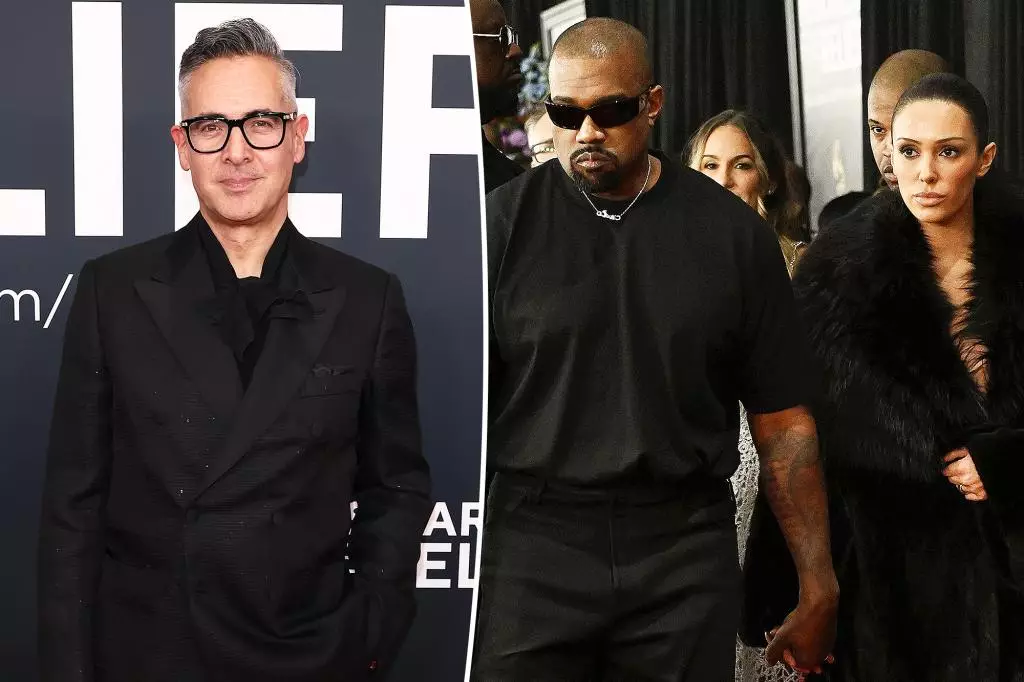The Grammy Awards have long been a platform not just for musical accolades but also for showcasing innovative and often controversial fashion choices. This dual celebration of talent and self-expression reached new heights during the 2025 Grammys, particularly with the appearance of Kanye West and Bianca Censori. Their audacious choice of attire sparked conversations regarding the expectations surrounding celebrity appearances at such prestigious events. Raj Kapoor, the executive producer of this year’s ceremony, underscored the gravity of adhering to what he termed the “standards” of the awards show.
In an interview with People, Kapoor shed light on the ambiguities of the Grammys’ dress code, which he described as “artistic black-tie.” Although he acknowledged that interpretations of this directive could vary widely within the music industry, the expectations still remain. For artists due to perform, such as West, who was nominated for a best rap song but opted out of performing, there are purportedly stricter guidelines in place. Kapoor expressed the Academy’s responsibility in clarifying these standards, especially for attendees who are not performing but still occupy a significant role in the event. The lack of a consistent dress code contributed to a striking divergence between Kapoor’s expectations and what transpired on the red carpet.
While the specific wardrobe regulations of the Recording Academy remain largely unannounced, CBS has previously issued advisory guidelines. These regulations were notably reiterated in a statement from 2013, emphasizing that certain body parts should be “adequately covered” and discouraging sheer clothing that could expose intimate areas. This advisory reflects a broader cultural sensitivity towards public decency and accessibility, considering the vast audience tuning in to the event. Kapoor’s comments indicate that while the artistic expression associated with the Grammys is celebrated, a framework of decency and decorum still exists to navigate.
Bianca Censori’s choice of a transparent minidress seemingly crafted from sheer materials struck a stark contrast to the advisory rules. The outfit left little to the imagination and eventually drew the ire and attention of both media and viewers alike. Initially accompanied by a fur coat, which she discarded as per an alleged suggestion from West to “make a scene,” Censori seemed unperturbed by the controversy her outfit evoked. Instead of opting for conventional glamour, she appeared to embrace the provocative nature of her fashion statement.
The pair’s intention seemed to stem from a desire to recreate the theme of West’s “Vultures 1” album cover, suggesting that their bold fashion choices were motivated by artistic expression rather than a mere quest for attention. However, their brief appearance, followed by an absence from the actual ceremony, pivoted the narrative from admiration for creativity to queries regarding their motivations. Ultimately, a report from Us Weekly suggested that Censori relishes in both positive and negative attention, highlighting the often-blurred lines between art, celebrity culture, and public scrutiny.
The events of the 2025 Grammys illuminate a compelling intersection of fashion, celebrity, and audience expectations. While the allure of individuality and artistic expression is celebrated within the music industry, the ongoing dialogue surrounding acceptable attire at high-profile events reveals deeper societal considerations. The backlash against Censori’s garb serves as a reminder that, despite an ostensibly liberalized view of attire, cultural norms and expectations play a pivotal role in public reception. Whether their audacious choices represent a critique of traditional norms or a calculated attention-seeking escapade remains an open question. In the end, it nudges us to reconsider how we interpret artistic expression in a world that’s continually negotiating its boundaries.

